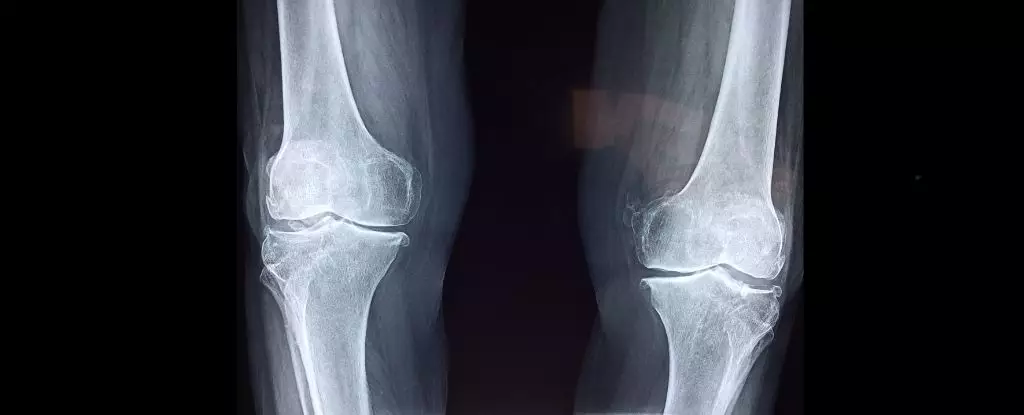Osteoporosis, often dubbed a silent disease, poses significant challenges to bone health as it frequently goes unnoticed until a fracture occurs. This condition, characterized by diminished bone density and strength, leads to fragile bones susceptible to fractures, particularly in vulnerable areas like the spine, hips, and wrists. According to the National Osteoporosis Foundation, an estimated 10 million Americans currently live with osteoporosis, while an additional 43 million have low bone mass—a critical warning sign that can precede this debilitating condition. Projected statistics suggest a worrying trend: by 2030, the number of adults grappling with osteoporosis or low bone mass could increase by over 30%, affecting around 71 million individuals.
Several factors contribute to the rising prevalence of osteoporosis. Lifestyle behaviors, particularly smoking, excessive alcohol consumption, and sedentary habits, play a pivotal role. Furthermore, as the population ages, the lack of awareness and insufficient attention towards the prevention and management of osteoporosis exacerbates the situation. While the statistics may be disheartening, it’s critical to understand that osteoporosis is not an inevitable part of aging. Orthopedic specialists emphasize that by adopting proactive measures early on, individuals can significantly bolster their bone health and reduce the risk of developing osteoporosis.
Though osteoporosis may not present symptoms in its early stages, there are subtle indicators that may suggest weakening bones. The most significant repercussions of osteoporosis are fractures, which can lead to chronic pain, disabilities, and a dramatically reduced quality of life. Alarmingly, approximately 9 million fractures worldwide are attributed to osteoporosis each year—approximately one every three seconds. Minor incidents, such as a mild fall, can lead to fractures of the hip, wrist, or spine, marking the potential onset of the disease.
Furthermore, noticeable changes in height, often a result of spinal compression fractures, can serve as an early warning sign. While height loss is a common occurrence as individuals age—averaging 1 to 1.5 inches (2.5 to 3.8 centimeters) over a lifetime—those with osteoporosis may encounter more substantial reductions in height of up to 3 inches or more in a short span. A noticeable curvature in posture, commonly referred to as kyphosis or hunchback, may also indicate significant bone loss. Persistent back pain often linked to spinal fractures can provide further context to one’s bone health status.
While osteoporosis cannot be entirely cured, specific lifestyle and dietary interventions can substantially mitigate its risk. Key nutrients such as calcium and vitamin D play integral roles in maintaining bone health. Calcium is vital for the development and preservation of strong bones, whereas vitamin D is essential for the absorption of calcium in the body. For optimal bone health, women over 50 and men over 70 should aim for a daily intake of at least 1,200 milligrams of calcium, with dairy products like milk, yogurt, and cheese being among the richest sources.
For those adhering to a vegan lifestyle, several plant-based foods—such as dark leafy greens, almonds, and beans—offer valuable calcium sources. Spreading the intake of calcium-rich foods throughout the day promotes better absorption and overall effectiveness. Vitamin D, typically acquired through sunlight and certain food sources or supplements, reinforces this nutrient’s effectiveness. Spending 10 to 30 minutes exposed to sunlight a few times a week often proves sufficient for adequate vitamin D synthesis, although individuals with darker skin tones or those residing in less sunny regions may need additional solar exposure.
Engaging in regular physical activity is another crucial element in osteoporosis prevention. Weight-bearing exercises, such as brisk walking, jogging, and weightlifting, can stimulate bone density enhancement. Resistance training aids in building muscle mass, contributing to overall stability and balance, which are vital in preventing falls. Health experts recommend at least 30 minutes of weight-bearing exercises on most days of the week, supplemented with strength-training sessions twice weekly.
Particularly for women, who may experience accelerated bone loss during and after menopause, maintaining an active lifestyle is paramount. Establishing healthy exercise habits well before menopause can lay a strong foundation for bone health in later years. Additionally, avoiding harmful habits, such as smoking and excessive alcohol intake, is crucial, as both can detrimentally affect bone density.
To identify osteoporosis early, women are advised to begin screening at age 65, while men with risk factors may also benefit from early evaluations. Medical assessments like bone density scans and spinal X-rays serve as essential tools to confirm diagnoses and detect compression fractures. In combination with age and medical history, these evaluations provide a comprehensive understanding of one’s bone health.
Managing osteoporosis is an ongoing commitment that necessitates an active approach to lifestyle changes. By recognizing early warning signs and implementing preventive measures, individuals can significantly enhance their bone health and quality of life. Emphasizing the importance of nutrition, exercise, and early detection is vital in tackling this often-overlooked health issue, keeping the silent threat of osteoporosis at bay.


Leave a Reply